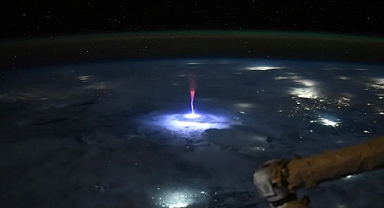Earth’s atmosphere scatters shorter wavelengths (like blue and violet), leaving the longer ones—reds, oranges, and yellows—more prominent, especially during sunrise and sunset. This scattering effect is why the Sun can appear yellow, orange, or even red depending on its position in the sky. But in space, free from Earth’s filtering atmosphere, the Sun shines a brilliant, balanced white. The Sun’s True Color: It’s Not Yellow at All
The Sun’s True Color: It’s Not Yellow at All
We’ve all drawn the Sun as a bright yellow circle since childhood, but here’s a surprising fact: the Sun isn’t actually yellow. In reality, the Sun emits all colors of visible light in roughly equal measure, which blend together to form white light. So, the Sun's true color—when viewed outside Earth's atmosphere—is pure white.The reason we usually perceive the Sun as yellow lies in the way Earth's atmosphere scatters light. When sunlight enters the atmosphere, shorter wavelengths (like blue and violet) are scattered in different directions by particles in the air. This is also why the sky appears blue during the day. The longer wavelengths—such as red, orange, and yellow—are scattered less and continue on a more direct path to our eyes. As a result, we often see the Sun as yellow, especially when it's high in the sky.At sunrise and sunset, this effect becomes even more dramatic. The Sun is lower on the horizon, so sunlight passes through more of the atmosphere. This causes even more scattering of the shorter wavelengths, allowing the red and orange hues to dominate the sky.However, astronauts aboard the International Space Station, who observe the Sun from outside Earth’s atmospheric interference, describe it as a blazing white sphere. This white light contains the full spectrum of visible colors—proof that our atmosphere plays a huge role in how we perceive the cosmos.
 The Sun’s True Color: It’s Not Yellow at All
The Sun’s True Color: It’s Not Yellow at AllWe’ve all drawn the Sun as a bright yellow circle since childhood, but here’s a surprising fact: the Sun isn’t actually yellow. In reality, the Sun emits all colors of visible light in roughly equal measure, which blend together to form white light. So, the Sun's true color—when viewed outside Earth's atmosphere—is pure white.The reason we usually perceive the Sun as yellow lies in the way Earth's atmosphere scatters light. When sunlight enters the atmosphere, shorter wavelengths (like blue and violet) are scattered in different directions by particles in the air. This is also why the sky appears blue during the day. The longer wavelengths—such as red, orange, and yellow—are scattered less and continue on a more direct path to our eyes. As a result, we often see the Sun as yellow, especially when it's high in the sky.At sunrise and sunset, this effect becomes even more dramatic. The Sun is lower on the horizon, so sunlight passes through more of the atmosphere. This causes even more scattering of the shorter wavelengths, allowing the red and orange hues to dominate the sky.However, astronauts aboard the International Space Station, who observe the Sun from outside Earth’s atmospheric interference, describe it as a blazing white sphere. This white light contains the full spectrum of visible colors—proof that our atmosphere plays a huge role in how we perceive the cosmos.







